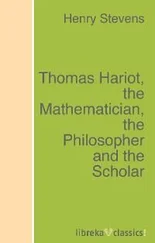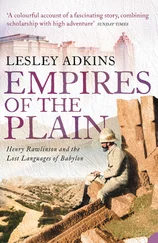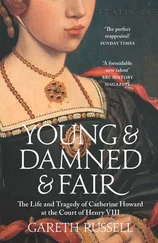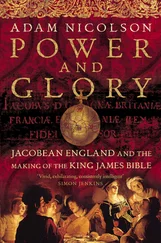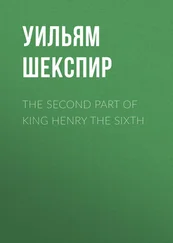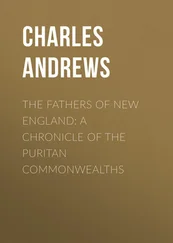Since she had first set foot in England, Catherine’s entourage had been trouble. Squabbles between her household officers had emerged as outright faction, headed by the Spanish ambassadors resident at Henry’s court, Pedro de Ayala and Rodrigo de Puebla, who hated each other. To the likes of de Ayala and Doña Elvira, de Puebla seemed to have gone native; worse still, he was servile and low-born and – the ultimate offence, in de Ayala’s eyes – he was ‘not a good Christian’ but a converso , a converted Jew. De Ayala, though, had since left England to take up a post at the Burgundian court, while de Puebla’s ally in Catherine’s household, her confessor, was recalled to Spain under a cloud. But the infighting between de Puebla and Doña Elvira continued and the Spanish were unable to present a united front – which was precisely what Ferdinand and Isabella, concerned that the divisions would impede negotiations for the new marriage, were afraid of.
In fact, although the squabbling continued, all parties were keen for the betrothal to go ahead. Whatever qualms Catherine may have had about marrying her dead husband’s brother were dispelled by a desperation to get out from under her duenna’s thumb and resume the status – and with it, the income – of an English princess. That spring, things were, it seemed, looking up. In a spasm of unaccustomed largesse that April, Henry had authorized an extra £100 over and above her normal household allowance, remembering to scribble ‘for this time only’ in the margin of his chamber accounts. So desperate were Ferdinand and Isabella to proceed that they deliberately avoided the knotty questions of Catherine’s income and her dowry. By 23 June, a new marriage treaty was signed and sealed. 47
Two days later, Prince Henry and Catherine were betrothed in a ceremony at the Bishop of Salisbury’s Inn, south of Fleet Street. It was only a start. There would have to be another engagement ceremony when the prince reached the marriageable age of fourteen. And before that, papal authorization would have to be obtained for the match to proceed. As Item 1 of the draft treaty outlined, such a dispensation was necessary because Catherine’s previous marriage had been ‘solemnised within the rites of the Catholic Church’ and ‘afterwards consummated’ – as Prince Arthur had boasted when he emerged after his wedding night announcing to his servants what ‘good pastime it is to have a wife’. 48As a result, Catherine was related to her intended spouse in the first degree of affinity. Both Henry VII and Ferdinand would have to negotiate the labyrinthine world of papal politics, whose venality and corruption had assumed baroque proportions under the rule of the Borgia Pope Alexander VI, who even his greatest admirer admitted ‘never did anything else, nor thought about anything else, than to deceive men’. 49Both monarchs, though, had reason to feel confident of success.
Henry placed a premium on his relationship with Rome. In the absence of other forms of legitimacy, he had from the beginning held papal validation of his reign – and papal condemnation of his Yorkist rivals – as being of prime importance. Ostentatiously parading his devotion to the church, he basked in the lustre of close relations with the papacy, constantly dangling the carrot of substantial financial backing in front of perennially bankrupt popes. But although Henry put his hand in his purse when occasion demanded, in general fine words and displays of piety were about as far as it went. In England, his administrators and lawyers attacked church jurisdiction – an obstacle to royal authority – at every opportunity, while the fruits of his exorbitant taxation of the church, and fees for appointments to bishoprics, tended to disappear into his coffers rather than making their way to Rome. Once, when a papal representative opened a collecting box installed at Henry’s court, he found at the bottom a measly £11 11s – along, no doubt, with a few cobwebs. But Henry also knew the value of warm diplomatic relations and good intelligence. By mid-1503, his agents and legal representatives in the papal curia seemed well placed. 50
In favouring the well-connected, politically and culturally sophisticated Italian merchants and diplomats who regularly arrived in England on curial business Henry killed two birds with one stone, gratifying popes by the attention and respect shown to their intimates, and employing them as his own eyes and ears at Rome, along with a number of highly educated permanent English representatives there. By mid-1503, as Henry and Ferdinand prepared to petition Alexander VI for the dispensation, the first-named among Henry’s diplomatic staff at the papal curia was a confidant of the pope himself.
Arriving in London in 1488 as a papal mediator in the ongoing conflict between England and Scotland, Adriano Castellesi had immediately come to Henry’s attention. Steeped in classical scholarship and sliding easily through the treacherous waters of curial politics, Castellesi embodied everything that Henry looked for in his diplomats. The king ‘much fantasied’ his political know-how and contacts, his precise, measured speech, and his willingness to put his talents at the king’s service. Castellesi was showered with grants and offices, including the bishopric of Hereford, a see from which he was almost always absent. As collector of papal taxes in England, he became the king’s ‘creature’ as much as the pope’s, in the process becoming close to the shrewdest of all Henry’s diplomats. Immediately recognizing the ease with which Castellesi moulded his considerable talents to fit the king’s desires, Richard Fox showed him ‘all good will and affection’. Henry and his advisers had backed the right horse, for in 1497 Castellesi became private secretary to Pope Alexander VI. 51
In autumn 1501 Castellesi had helped secure the bull anathematizing the earl of Suffolk; the following year he helped ratify the marriage of Henry’s daughter Margaret to Scotland’s James IV. When, in 1502, Castellesi sent a deputy to London to look after his affairs, he selected his agent with typical discernment and a shrewd awareness of the king’s interests. Polydore Vergil was a promising young historian from Urbino, one of the fortified hilltop towns perched in the jagged spine of the Italian Marches, whose court under the famed Montefeltro dukes had become a byword for intellectual culture. Henry received him with the courtesy and kindliness that he always reserved for foreign men-of-letters whose skills he might be able to put to political use – and he was to take a particular interest in Vergil’s literary abilities.
By summer 1503, and now a cardinal, Castellesi was in Rome trying to engineer the papal dispensation for the new Anglo-Spanish marriage. On 6 August he invited the seventy-eight-year-old Alexander and his implacable son Cesare Borgia, so remorseless that even his father was scared of him, to a banquet at his gleaming new palazzo near the papal enclave in Borgo. Dinner went on late into the balmy summer evening; the table talk, fuelled by fine wines, would undoubtedly have taken in the political situation in Italy, where Aragonese forces had pushed the previously rampant French armies back up the peninsula, retaking Naples the previous month. The subject of the papal dispensation, too, would have come up. The Aragon-born Alexander, constantly playing off French and Spanish interests against each other to his own and his son’s advantage and aware of Henry VII’s full coffers, must have been delighted at the bargaining chip with which he was now presented. But it was to be the last dinner the Borgia pope ever ate. 52
Whether, as was widely rumoured, Alexander was poisoned, or whether he died of disease, is unclear – though the fact that both Castellesi and Cesare Borgia were both dangerously ill in the days following the banquet perhaps tells its own story. Alexander VI died on 12 August, to widespread rejoicing in Rome. Following a disorderly funeral, at which fights broke out, Alexander’s bloated, decomposing body, its complexion ‘foul and black’, was unceremoniously rolled up in an old carpet and jammed into an undersized coffin by six labourers who made blasphemous jokes about the corpse as they did so. 53His successor, the decrepit Pius III, died within twenty-six days of his election; in his place came Julius II, the ‘terrible’, the warrior pope, who harboured an implacable hatred of all things Borgia. 54All those who had gone in fear and trembling under Borgia rule were delighted; Henry and Ferdinand were less so. They would have to recalibrate their approach – and so too would the former Borgia favourite Adriano Castellesi.
Читать дальше



